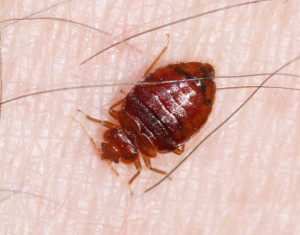How to Get Rid of Bed Bugs
bed bug cases have been reported in virtually every region on earth, including all 50 U.S. states. Although their numbers fell into decline during the mid-20th century, a resurgence of bed bug infestations began in the 1980s and has largely continued to this day.
Bed bugs feed almost exclusively on human blood, and – as they name implies – they often inhabit areas where people sleep to ensure a steady food source. According to the Environmental Protection Agency (EPA), bed bugs are commonly found on or near the piping, seams, and tags of mattresses and box springs, as well as nooks and crannies of the bed frame and headboard.
What Are Bed Bugs?
The bed bug, or Cimex lectularius, is a parasitic insect that belongs to the cimicidae family. Bed bugs are barely visible to the naked eye; most measure about 5mm to 7mm in length. Key identifiers include:
A mottled, red-brown color
Flat, ovoid shape when unfed; ballooning shape when fed
Relatively small wings compared to body size
An odor the EPA describes as “musty-sweetish” that comes from glandular secretions
Human blood is the bed bug’s primary food source. They are nocturnal eaters, and will rarely bite humans during the day. While they can survive for more than a year without eating, bed bugs may consume blood daily if it is readily available. In fact, they can consume as much as seven times their own body weight during one feeding session. Pets and animals may carry bed bugs, but they are rarely bitten. Although they usually remain near sleeping human hosts, adult bed bugs will travel up to 100 feet in search of food.
Bed bug bites produce small red lumps, along with a severe itch that may linger for several days. Thankfully, numerous studies have concluded that bed bugs do not transmit any blood-borne pathogens between human hosts, but the bites can still be very uncomfortable.

How to Kill Bed Bugs, the Enemy You Sleep With
I’d lost count of how many salvos of Raid I’d used on my roommate’s mattress by the time I hoisted it up to slip on a plastic cover. As I did so, the bed bugs — fat with stolen blood — fell into my hair and dropped lazily to the floor.
They’re dead. They’re dead. They’re dead. Over and over again I repeated the mantra in my head, sealing the heavy-duty plastic up as tight as possible and shimmying it out my door and down three flights of stairs, before running back inside out of the November cold.
That’s right. November. Even though bed bug infestations peak in August, rest assured, they appear year-round — I should know. That’s why you need to learn how to prevent and destroy them, ideally before you ever even see one. Winter is coming. This is the definitive guide to preparing for the worst and making war upon your enemy: the common bed bug.
How to kill the common bed bug: Understand you are waging war
Scout the field of battle, collect samples, and plan
If you’re reading this, you have probably already seen at least one bed bug and never want to see any again, but it’s still a good idea to scoop one up and put it in a Ziploc bag. This will show an extension agent or exterminator what you’re dealing with, as well as provide evidence in case a landlord is unwilling to comply with laws regulating bed bugs and pest control.
The first thing I did was call my landlord to tell him what the situation was. He put me in touch with his go-to exterminator, who immediately texted me a short checklist (below) of things to take care of before bed bug treatment, then told me that his pesticide extermination would take place in two sessions, one week apart from each other.
A PRACTICAL GUIDE TO BED BUG PREVENTION AND CONTROL
The common bed bug is one of the most common pests found in human dwellings all over the world, especially in multi-family housing units. Many people, especially property managers and tenants in apartment buildings (complexes), shelters, dormitories, and other housing facilities, do not know how to properly get rid of bed bugs. Perhaps more importantly, they do not know how to keep bed bugs from gaining entry into public facilities. This publication provides some basic information about the bed bug, how to prevent it from infesting a housing unit, and how to eliminate bed bug infestations.
Stop Bed Bugs Before They Get In
Multiple-family housing is at high risk for bed bug infestations. People and their personal belongings move into these facilities almost every day, which makes the chances quite high that bed bugs will enter. It is important for management to work with individuals who are moving in or coming for a visit to prevent them from introducing bed bugs. Existing tenants can also take steps to keep bed bugs from establishing in the building, which will reduce the cost of any control program.
A property manager should interview incoming tenants and ask if they have been exposed to bed bugs recently, if anyone in the family has been bitten by bed bugs, and if they need help with a known or suspected bed bug problem. Immediate help is critical to avoid spreading bed bugs in the facility. Assist potential tenants with medical attention for bites, help them launder clothes, and isolate their furniture and other belongings until the bugs can be killed. Keep in mind that an interview isn’t always foolproof: tenants may not know they have bed bugs or that they have been bitten by them.
Identification and Behavior
Bed bugs feed on human blood and usually bite when people are sleeping. In most people, the bites cause red welts and itching that can last several days. Some people have no reaction to bed bug bites and are not even aware of an infestation.
Unlike mosquitoes, bed bugs do not transmit diseases, although prolonged exposure can cause allergic reactions or asthma, especially in children. Bed bugs must feed several times on humans to complete their life cycle and lay eggs. Since they depend solely on blood for food, and can develop large infestations, bed bug bites often lead to emotional anguish and sleeplessness.
Bed bugs: Do-it-yourself control options
Bed bugs are one of the most difficult pest problems to eradicate quickly. By far, the best solution for bed bugs is to hire a pest control company with experience successfully controlling bed bugs. Unfortunately, this can be expensive and beyond the means of many people. If you feel you cannot afford to hire a professional, and want to attempt do-it-yourself bed bug control, there are some things you can do. With diligence and patience and some hard work you have a fighting chance of getting rid of bed bugs in your home.
If you live in an apartment or condominium, it’s best to alert the property manager. A coordinated bed bug control effort using a pest control company is generally needed in such situations. Bed bugs readily move from apartment to apartment, with many people unaware that they have a problem. If one apartment is infested, adjoining units (left side, right side, above and below) should be assumed to be infested unless shown otherwise through inspection or monitoring. Simply asking tenants whether they have bed bugs is not enough.
Pesticides alone are not the answer to bed bugs. Most of the commonly used pesticides today, including professional products and consumer products advertised for control of bed bugs, are at best moderately effective at controlling these pests. Pesticides must be used with care for safety and with attention to proper application to work well. Aerosol “bug bombs” or “fumigators” are also mostly ineffective in eliminating bed bugs. Aerosol insecticides mainly kill insects that are exposed, and out of their hiding places, not those hidden behind baseboards, in cracks and crevices of the bed, under carpet edging and in walls.
Steps for do-it-yourself bed bug control
Determine which rooms are infested. Bedrooms are the principal locations for bed bugs; however, any room where people sleep in the home may provide harborage for bed bugs. Living rooms with sofas and sofa beds are the next most common sites for bed bugs. Typically an infestation starts in one room and spreads slowly to other places where people sleep. The sooner you find and treat bed bugs the easier it will be to get rid of them. Wait too long and bed bugs may be found throughout your home.
Don’t throw your bed away. It’s generally unnecessary to throw away beds or bedding. It is expensive to replace bedding, and chances are that any new mattresses, box springs or beds you bring into the home will quickly become re-infested. The money to replace a bed or mattress might better be spent on hiring a professional.
Create a safe place to sleep. This is critical because staying in your own bed will reduce the risk of bed bugs spreading throughout your home. If you move to another room to sleep, the bed bugs will eventually follow. Then you’ll have bed bugs in multiple rooms
Make your bed a safe place to sleep by:
Stripping and vacuuming the mattresses and box springs, and encasing them. Double bag your bedding and wash in hot water and dry for at least 30 minutes (discard the inner bag after putting bedding into the washer, as it could have bed bugs). After vacuuming suspected bed bugs from the bed, take your vacuum cleaner outdoors and remove and discard the bag. Purchase a good quality set of bed-bug-proof encasements for your mattresses and box springs. Bed bug-proof encasements are fabric sacks into which you slide your mattress or your box spring. The zippers on bed bug encasements are designed to be tight enough to prevent even the smallest life stages of the bed bugs from escaping. Also, good bed bug-proof encasements are woven to prevent bed bugs from biting you through the encasement. A good encasement will trap all bed bugs in the mattress and box spring inside, and will be smooth on the outside, providing few places for bed bugs to hide. Sears, Target, Walmart and other stores may sell bed bug-proof encasements, but these can also be purchased online.
LEARN HOW TO GET RID OF BED BUGS
Step process is a summary of all the techniques we’ve tried and found effective in getting rid of bed bugs. While we include a variety of solutions in the step process the easiest and most cost effective solution we can recommend is heat treatment.
Heat treatment has several benefits: unlike with pesticides, bed bugs are not able to acquire a resistance to heat treatment over time, and will die within minutes at 120F. Since this temperature is relatively low it is safe for the majority of household goods.
The methods presented throughout the 8-step process can be used in conjunction with these products or by themselves if you find that even the is outside of your price range. Professional pest management is also a great solution if this sounds like something you don’t have the time or patience for and if you can afford it.
CREATE A SAFE ZONE
In this step we show you how to make your bed into a Safe Zone, completely free of bed bugs and proofed against re-infestation. This will allow you to get a good night’s sleep without getting bitten and to feel safe in your own bed
DEALING WITH YOUR PERSONAL BELONGINGS
Bed bugs are so small they can hide in just about anything. In this step, we show you how to make sure all of your personal and household items are bed bug free


